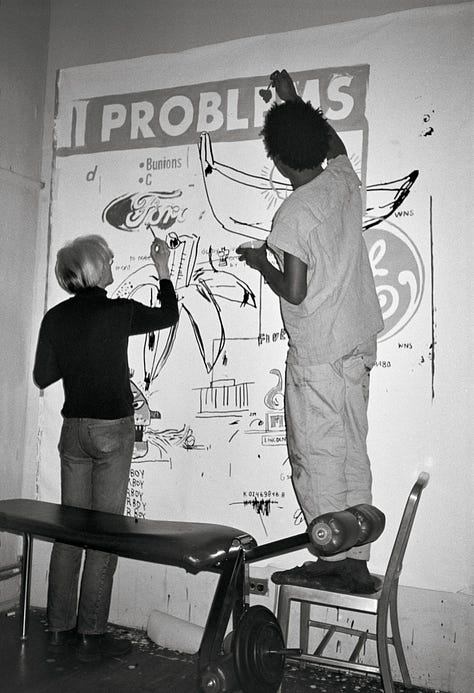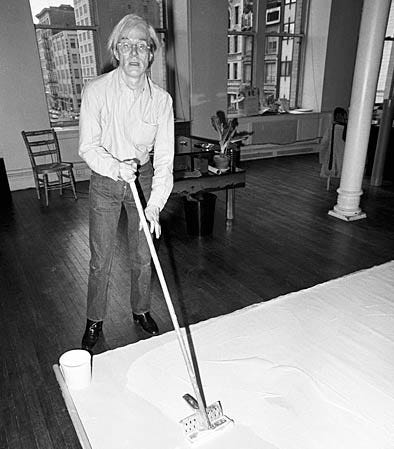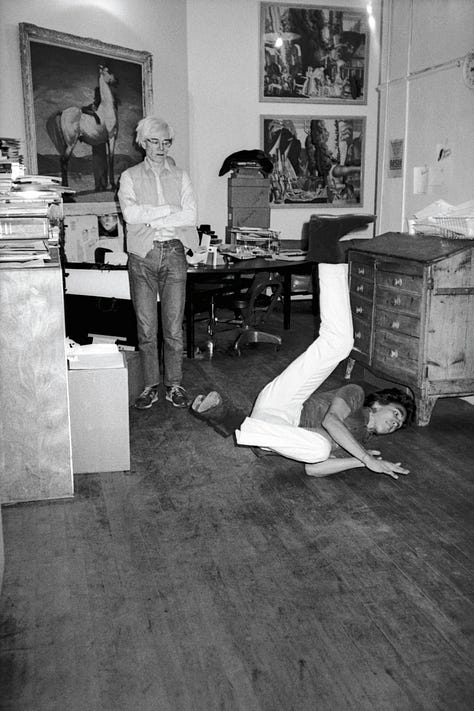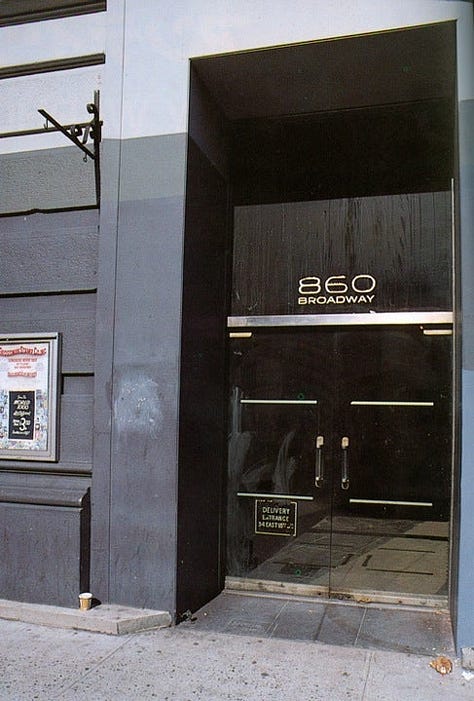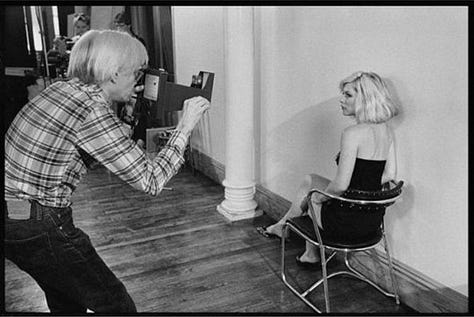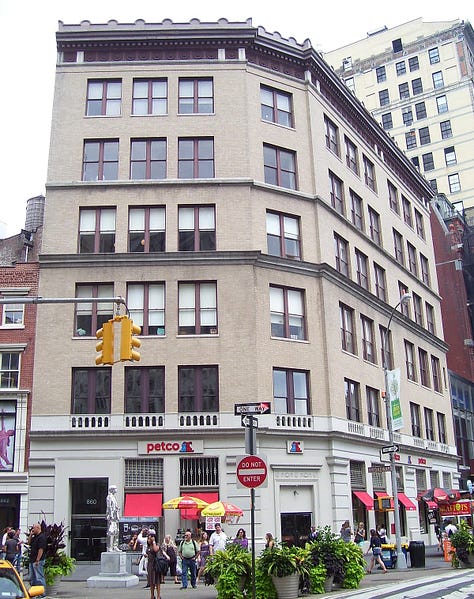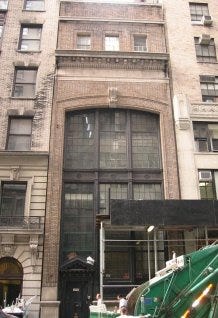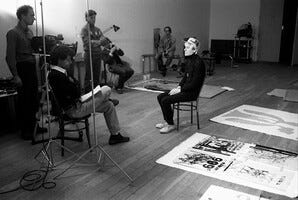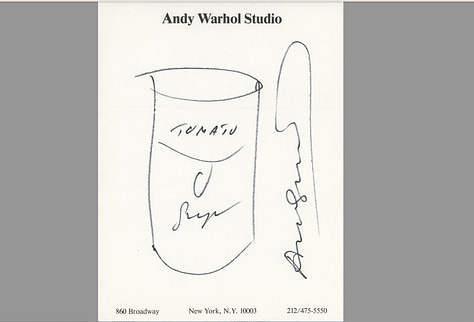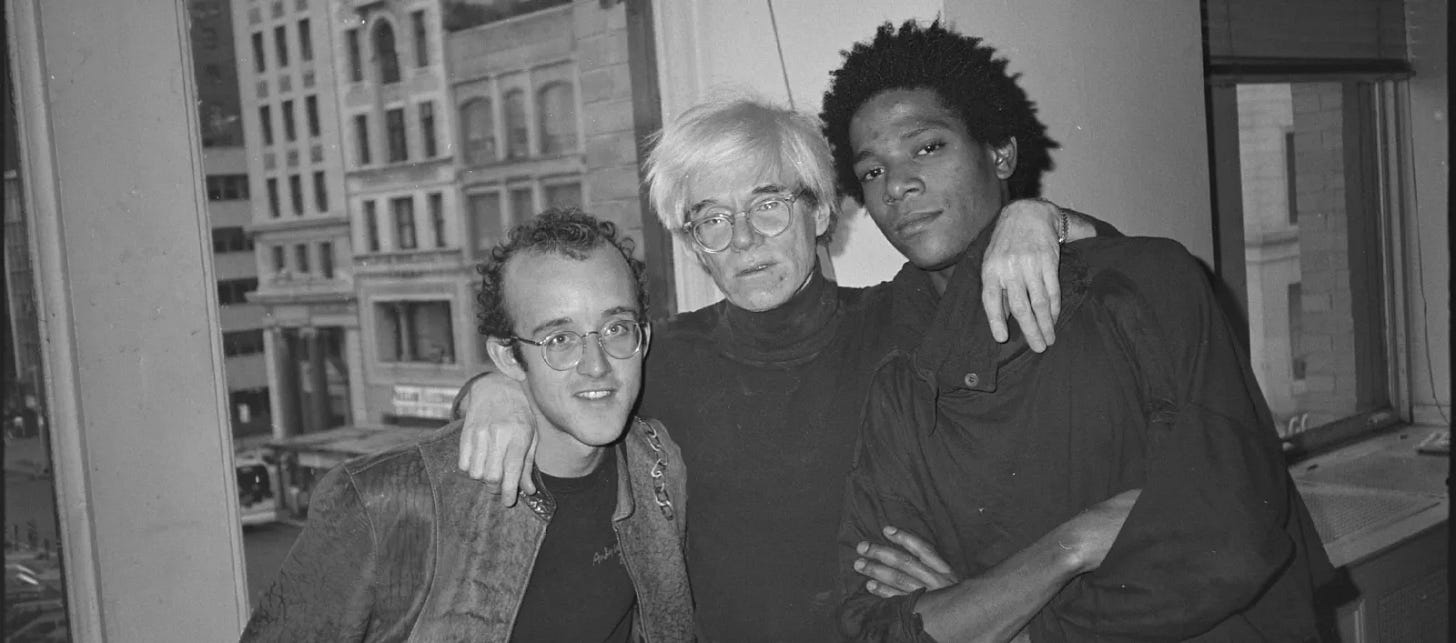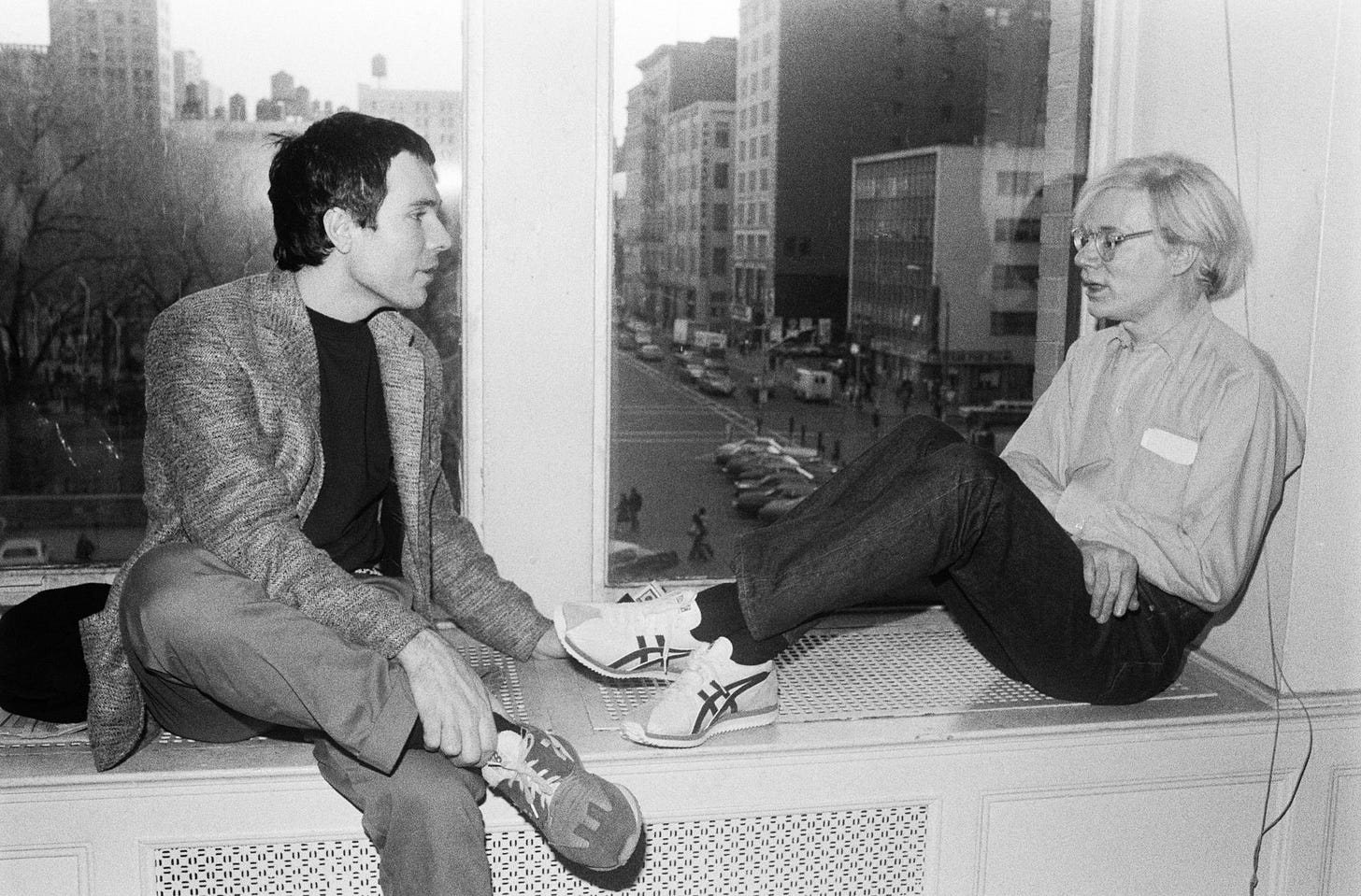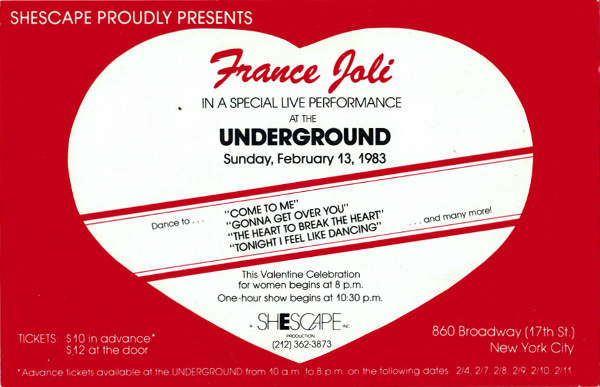Where Warhol Worked (*Partied) - Part 2!
"The Factory" was Andy Warhol's studio and party pad, which throughout his lifetime moved to four different locations.
In a continuation from last week’s newsletter, we begin with the year 1973, when five years after being shot at, visual artist and Pop art sensation Andy Warhol moved his Factory (what he called his art studio) once again to what is considered its third location—860 Broadway, on the north end of Union Square Park. This relocation was spurred in part by the fact that Warhol needed more space for his studio but also because he felt that he needed more security, a logical response after the 1968 attack by Valerie Solanas that scarred him for life. According to Bob Colacello, former Interview magazine editor and author of Holy Terror: Andy Warhol Close Up: “The third Factory occupied the entire floor of 860 Broadway, a six-story brick building that curved with the corner and extended through the middle of the block to East 18th Street, where there was a rear entrance with a freight elevator and a second staircase. This meant that Andy could escape undetected if disgruntled Superstars and off-the-wall fans came knocking at the bullet proof door we took across the square with us.”
Colacello also mentions in his book that Warhol had a proper security system with closed-circuit TVs installed at the new Factory, and that he tried to get the building to hire an armed guard for the lobby but that the landlord refused, saying that the other tenants would object to such a thing. Another unique “security” measure that Andy and his crew employed while at the third Factory was to hire foreign-language speaking receptionists. Warhol’s friend Fred Hughes came up with the idea, devising a system of connecting the Factory’s phone line to the lines of Warhol and Hughes’ friends who spoke in thick accents, who would deter unwanted callers with confusing replies, frustrating them by making them spell their names out four or five times or making them feel as if they had dialed the wrong number to begin with.
All in all, Warhol would go on to spend just about ten years at 860 Broadway (from 1974-1984), making it the longest lasting location for any one of his Factories and thus the one he is usually most closely associated with (In 2011, The Public Art Fund even put up a silver statue of Andy by artist Rob Pruitt in Union Square). During this decade, Warhol would create countless sets of iconic works, including the boxes of “Time Capsules” (which now reside at the Warhol Museum in Pittsburgh), his skull paintings, his infamous piss paintings, and many of his films. Despite staying at this location for a decade, however, Warhol would also find many faults with the place over the years, including his harboring a recurring concern that the space was only three floors up from the street and therefore could be easily threatened by someone throwing a bomb or brick through the window.
Warhol apparently at one point anxiously vented to Hughes: “It's only three floors up, and everybody can see right in and know if I'm here. Did you ever think of that Fred?” Nevertheless, Andy ultimately found the giant window sill at 860 Broadway to be his favorite place to sit in the studio, and he would often read newspapers from there, sit there to chat with friends, or take pictures from there of the view below.
Interestingly enough, in addition to housing Warhol’s Factory, 860 Broadway would become home to several other important LGBTQ venues during this time. Beginning on February 28th, 1980, The Underground discotheque opened up in the building’s basement (hence its name), intending to pick up Studio 54’s slack after the closure of the historic club on February 4th, 1980. The Underground was opened by club owner Maurice Brahms (a former partner of Studio 54’s Steve Rubell and Ian Schrager) alongside Jay Levy, who were both looking to cash in on the fact that Schrager and Rubell had just been sent to prison. The Underground was open Thursday, Friday and Saturday nights as well as for Sunday afternoon Tea Dances, and was a huge club with distinctive neon and brick walls and four to five separate bars, while Eric Erickson handled the club’s impressive lighting system. The club played mostly New Wave music and managed to attract celebrities as well as a large crowd of folks trying to relive their unforgettable nights at Studio 54, though The Underground could never quite reach those same heights.
Legendary DJs who played at The Underground included Jim Burgess, Robbie Leslie, Roy Thode, Michael Fierman and John Ceglia, and the club hosted all sorts of LGBTQ events and performances, including Shescape, a traveling lesbian dance party, and concerts from the likes of John Sex and Grace Jones. Gay party promoter John Blair (of Roxy, Palladium, XL, etc. fame) also got his start at Underground, while Baird Jones (of Studio 54, Webster Hall, etc. fame) promoted the Thursday, Friday and Saturday night parties there from 1983 to 1986, famously distributing a "Permanent Pass" featuring his caricature.
The Underground ultimately shuttered in 1989 but that same year was revamped and renamed La Palace de Beauté with Steve Lewis, Larry Tee, and Michael Alig leading the way. La Palace was home to both the acclaimed DJ Jellybean Benitez (who both dated and produced for a young Madonna) and to a wide-eyed RuPaul, who fresh off the bus from Atlanta entertained at La Palace alongside Larry, Lady Bunny and Lahoma Van Zandt. According to an interview with Van Zandt, La Palace de Beauté was initially the name of a three-person performance group comprised of Lahoma, Larry Tee and RuPaul, who would tour around and perform together. The group, with Larry as the lead singer and Lahoma and Ru as the two backup girls, then changed its name to the Love Machine, but presumably repurposed their original name by donating it to the club at 860 Broadway.
Additionally, before the opening of Disco 2000 at The Limelight, Michael Alig and his merry crew of Club Kids comprised of Keoki, Kenny Kenny, Bella Bolski, Christopher Robin, Richard Move and James St. James, would also run around the short-lived La Palace de Beauté, which officially had come to the end of its run by 1991. In a shocking turn of events, the building then became home to a Petco pet store, which remained there until 2022.
In 1984, Warhol would move his remaining ventures, which no longer included filming, to a conventional office building at 22 East 33rd Street, to what is considered his final Factory location. His studio at 860 Broadway, meanwhile, would become home to designer and artist Stephen Sprouse's showroom. During this tail-end period of his career, Warhol would go on to create works such as his recently controversial portrait of Prince (Orange Prince, 1984), and his 1985 silkscreen portrait series of female monarchs called Reigning Queens. Warhol would unfortunately go on to pass away, however, rather unexpectedly on February 22nd, 1987 at the age of 58. According to news reports, Warhol had been recovering from gallbladder surgery at the New York Hospital and was fully expected to survive the simple operation, but shockingly died in his sleep from a sudden, post-operative irregular heartbeat.
With his untimely death came the nail in the coffin that would end Warhol’s series of Factories around the City. With Warhol now deceased, 22 East 33rd Street morphed into the home of The Andy Warhol Foundation for the Visual Arts, which would remain there until 1994 before moving to a new location on Bleecker Street, where it still stands today. The building which housed Warhol’s final Factory would go on to change hands numerous times and would house various office headquarters, restaurants, and luxury condos over the years but today no longer exists. Just like the building that housed Andy Warhol’s very first Factory location, it too was torn down in 2013. Thankfully, at least 860 Broadway is still standing tall, even if just as a haven for dog food and kitty litter. Warhol would have appreciated the irony—and who knows—were he still alive, we might have gotten some Purina Chow or Tidy Cats art pieces à la Brillo as a result.
